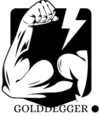
Strength training isn’t just for bodybuilders or athletes. It’s a crucial component of overall health and fitness that anyone can benefit from, regardless of age or fitness level. This guide will walk you through everything you need to know to create an effective strength training routine tailored to your goals. Ready to get stronger? Let’s dive in!
Understanding Strength Training
Definition of Strength Training
Strength training, also known as resistance training, involves exercises designed to improve your strength and endurance. This typically includes lifting weights, but can also involve bodyweight exercises, resistance bands, and machines.
Benefits of Strength Training
The benefits of strength training are extensive. It boosts metabolism, enhances muscle mass, improves bone density, and increases overall strength. Additionally, it aids in weight management, reduces the risk of injury, and can improve mental health by reducing symptoms of depression and anxiety.
Setting Your Goals
Importance of Goal Setting
Setting clear, achievable goals is essential in any fitness regimen. Goals provide direction and motivation, helping you stay focused and committed.
Types of Strength Training Goals
Your goals might include increasing muscle mass, improving overall strength, enhancing athletic performance, or simply staying healthy. Define what you want to achieve to tailor your routine accordingly.

Assessing Your Current Fitness Level
Importance of Fitness Assessment
Before starting any new fitness routine, it’s important to assess your current fitness level. This helps you set realistic goals and track your progress.
Methods to Assess Fitness Level
Common methods include fitness tests like push-ups, sit-ups, and squats to gauge muscular endurance, and one-rep max tests to measure strength. Additionally, consider factors like flexibility, balance, and cardiovascular health.
Designing Your Strength Training Routine
Principles of Strength Training
Understanding the core principles of strength training is crucial. These include specificity (targeting specific muscle groups), overload (challenging muscles to grow stronger), and progression (gradually increasing the difficulty of exercises).
Structuring Your Routine
Warm-up
A proper warm-up prepares your body for the workout ahead, reducing the risk of injury. Spend 5-10 minutes on light cardio and dynamic stretches.

Main Workout
The main workout should consist of exercises targeting different muscle groups. Plan for 45-60 minutes of focused training.
Cool Down
Finish with a cool-down to aid recovery and reduce muscle soreness. This can include light cardio and static stretching.
Choosing the Right Exercises
Compound vs. Isolation Exercises
Compound exercises work multiple muscle groups simultaneously, while isolation exercises target a single muscle group. Incorporate both for a balanced routine.
Upper Body Exercises
Bench Press
A staple for building chest, shoulder, and triceps strength. It’s performed lying on a bench, pressing weights upward.

Pull-ups
Great for upper back and biceps, pull-ups involve lifting your body up to a bar using your arms.
Lower Body Exercises
Squats
Squats are fundamental for leg strength, targeting the quadriceps, hamstrings, and glutes. Perform them with or without weights.
Deadlifts
Deadlifts strengthen the entire posterior chain, including the back, glutes, and hamstrings. They involve lifting a weight from the ground to hip level.
Determining the Right Volume and Intensity
Reps, Sets, and Weight
Your routine should include a mix of reps (repetitions) and sets (groups of reps) with varying weights. Beginners might start with 2-3 sets of 8-12 reps.
Progressive Overload Principle
Progressive overload is increasing the weight, reps, or sets over time to continue challenging your muscles.

Incorporating Rest and Recovery
Importance of Rest Days
Rest is when your muscles repair and grow. Include rest days in your routine to avoid overtraining and injuries.
Techniques for Recovery
Techniques such as stretching, foam rolling, and massages can aid recovery. Proper sleep and hydration are also crucial.
Nutrition and Strength Training

Role of Nutrition in Strength Training
Nutrition fuels your workouts and aids recovery. A balanced diet with adequate protein, carbohydrates, and fats is essential.
Pre- and Post-Workout Nutrition
Consume a meal or snack with carbs and protein before your workout for energy. Post-workout, refuel with protein and carbs to aid muscle repair.
Common Mistakes to Avoid
Overtraining
Training too often without sufficient rest can lead to injuries and burnout. Stick to a balanced routine with rest days.
Poor Form
Using incorrect form can cause injuries and reduce the effectiveness of exercises. Focus on quality over quantity.
Tracking Your Progress
Importance of Progress Tracking
Tracking progress keeps you motivated and helps you see improvements. It also highlights areas needing adjustment.
Methods to Track Progress
Use a workout journal, take progress photos, or use apps to log workouts and track improvements.

Adjusting Your Routine
When and How to Make Adjustments
Adjust your routine every 4-6 weeks to keep making progress. Increase weights, change exercises, or adjust sets and reps.
Signs You Need to Change Your Routine
If you hit a plateau, feel bored, or notice no progress, it might be time to change your routine.
Using Technology to Enhance Your Routine

Apps and Gadgets
Fitness apps can track workouts, suggest exercises, and provide motivation. Gadgets like smartwatches monitor activity and health metrics.
Online Resources
Online platforms offer workout plans, tutorials, and communities for support and advice.
Staying Motivated
Tips for Staying Motivated
Set short-term goals, reward yourself, and find a workout buddy. Changing up your routine can also keep things interesting.
Overcoming Plateaus
If progress stalls, try new exercises, increase weights, or tweak your diet. Stay patient and consistent.
Conclusion
Building a strength training routine is a journey that requires planning, commitment, and adjustment. By understanding the principles, setting clear goals, and tracking your progress, you can create an effective and enjoyable routine. Remember, the most important step is to start and stay consistent. Ready to get stronger? Your journey begins now!
FAQs
How often should I train each week?
For most people, training 3-4 times a week is effective. This allows enough time for muscle recovery while keeping progress steady.
Is strength training suitable for beginners?
Absolutely! Beginners can start with basic exercises and gradually increase intensity. It’s important to focus on form and consistency.
What equipment do I need for strength training?
You can start with minimal equipment like dumbbells, resistance bands, or even just bodyweight exercises. As you progress, you might add barbells, kettlebells, and machines.
Can strength training help with weight loss?
Yes, strength training increases muscle mass, which boosts metabolism and helps burn more calories even at rest.
How long will it take to see results?
You might start to see improvements in strength and energy levels within a few weeks. Visible changes in muscle size typically take a couple of months of consistent training.

Now You Can Get the Lean Body You Have Always Desired… Without Avoiding Carbs or Starving Yourself to Death.
How to Lose Weight Feasting on Delicious Carbs. Click here to get accass

